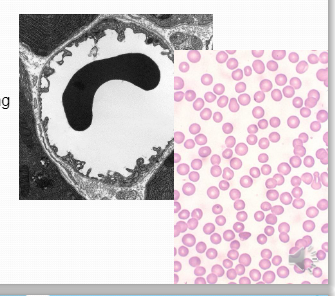
Erythrocyte (red blood cells)
Disc shape: Lack of organelles or nucleus occurs during cell development- important for the exchange of gas - provides more space due to bi-concave of shape.
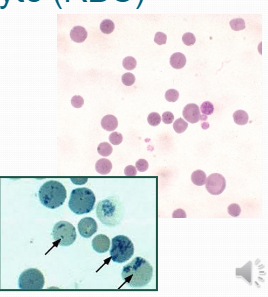
Reticulocytes:
Blood cells that have specs: bloods cells that have not completely been broken-down.
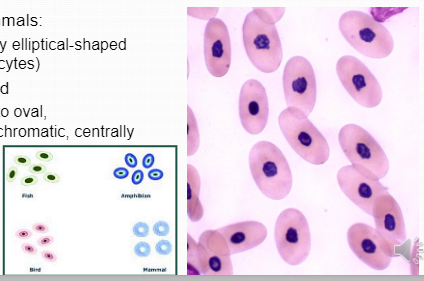
Species Variation
Nonmammals: typically elliptical-shaped
(elliptocytes)
Nucleated
round to oval,
heterochromatic, centrally
placed
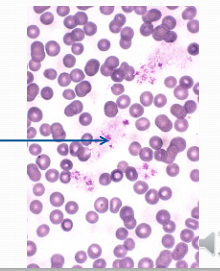
Thrombocytes (cells that break off)
Circulate for 5-6 days
40% stored in spleen
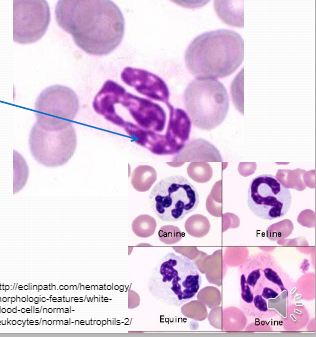
Granulocytes
Distinguishing of different blood stains.
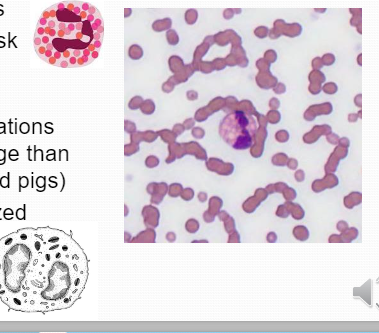
Eosinophil
As granules mature they are able to attack specific pathogens in Eosinophil (granules are less specific in marrows)
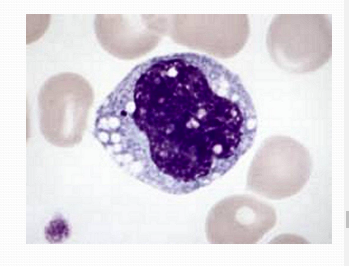
Non-Granulocyte: Monocyte (less common)
Non-segmented nucleus: lobed deeply indented: they become macrophage
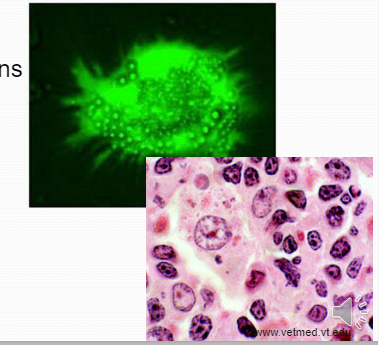
Monocytes
Elicited: Phagocytes or breakdown cells that have died and need to be broken-down.
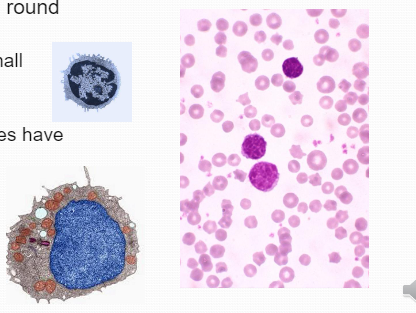
Lymphocyte
round in shape (relate to activity): Active lymphocytes have
more cytoplasm
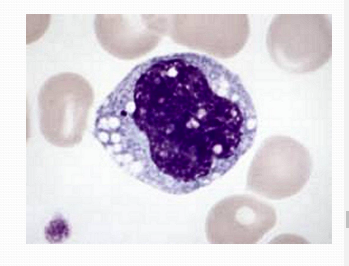
Non-Granulocyte: Monocyte
Non-segmented nucleus, Typically deeply indented, Or lobed (bi-lobed, tri-lobed)
Non-Granulocyte: Monocyte
What is slightly larger than other WBCs, lacks distinctly stained granules and basophilically stained cytoplasm with clear vacuoles (lysosomes)
Non-Monocyte
This Non-Granulocyte Circulates in blood stream for up to several days, also known as a macrophage.
Elicited monocyte/phage engulfs & breakdowns cellular and extracellular foreign substances such as
BacteriaFungiProtozoansVirusesTransformed cellsDying cellsCell debris
Non-Granulocyte: Lymphocyte
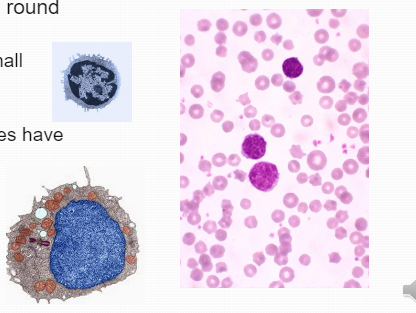
Non-segmented round nucleus, Sometimes w/ small indentation (seen ultrastructurally), Active lymphocytes have more cytoplasm
Non-Granulocyte: Lymphocyte
Numerous short pseudopodial processes: amoeboid movement, cellular interaction (ex. cancer cells)
Non-Granulocyte: Lymphocyte (Two types, T and B)
Cannot differentiate without IHC. Association with monocyte/macrophage (Mo/Ma)
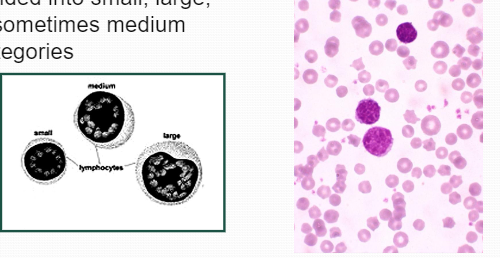
Non-Granulocyte: Lymphocyte
Size varies for each sp: divided into small, large, & sometimes medium categories
Lymphocyte vs Thrombocyte (nonmammalian)
Lymphocytes identical to mammals –difficult to distinguish from thrombocytes when small